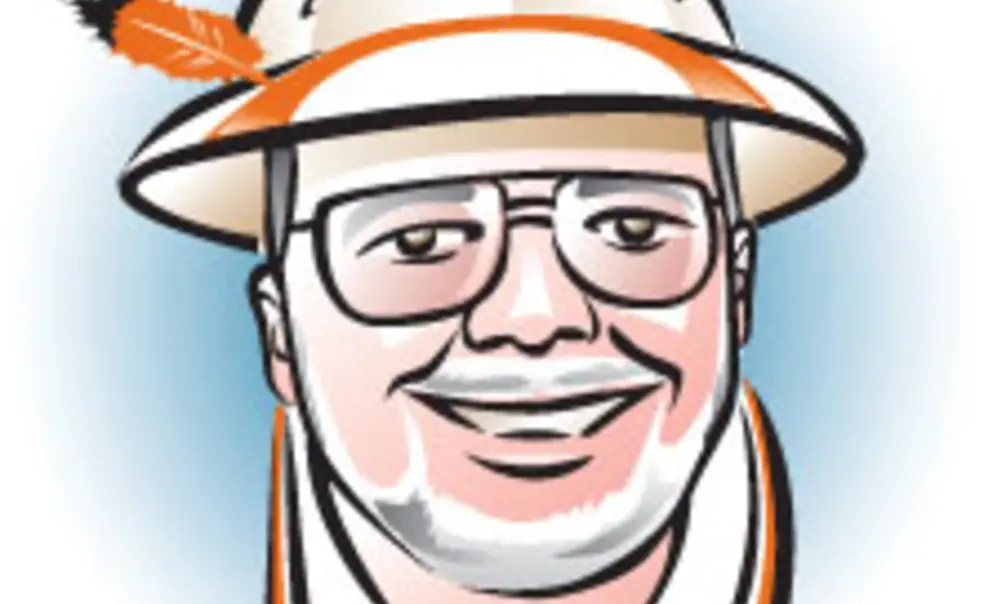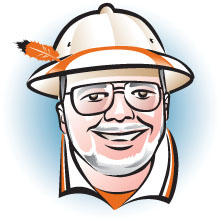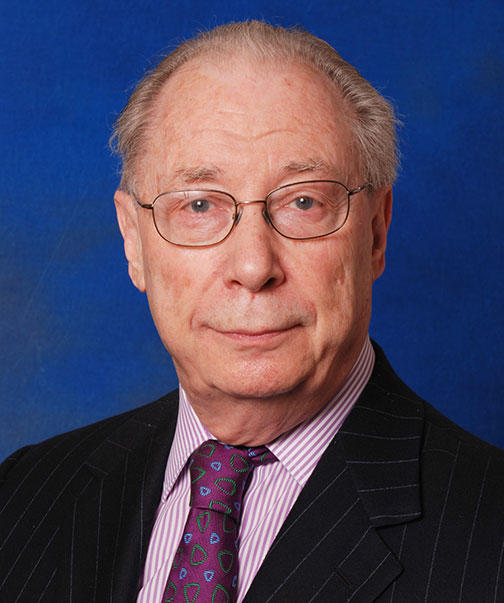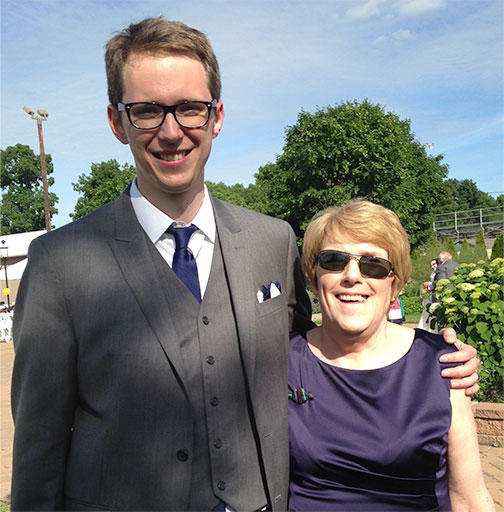A mind is a terrible thing to waste.
— United Negro College Fund, 1972
In considering this year’s PAW theme issue — Neuroscience and the Brain — there are multiple facets of Princeton’s history that come to mind (as it were) for a bit of exploration. The advances of the pure science in the field are well examined throughout our opus in print, certainly. The physical development of the sciences at Princeton is quite interesting, too, as they have come to occupy a huge chunk of campus space and budgets, beginning with the Halstead Observatory in 1872 and continuing enthusiastically in recent decades in such as the Lewis Thomas ’33 Lab for mol bio, the Icahn Genomics Lab, the new Andlinger Center for Energy and the Environment, and of course the two new married buildings relating to brain studies: Peretsman Scully Hall of the psychology department, and the Princeton Neuroscience Institute.
Regardless, the minute I heard about the theme I knew what I needed to chat about with you, and it doesn’t have much to do with either strategic resources or biotech. It has to do with people. It’s always a danger in cutting-edge science to fall back on a mechanistic view of developments and challenges, of attacking the frontier, of blazing trails. As legitimate as that may be conceptually or financially, it is critical to keep in mind (oops again) the virtues of human perspective in those who are tasked with this exploration, and the great things that can happen as a result.
Especially if it’s your personal brain.
Well, it’s actually my wife, Beth’s, and her neural adventures, which began in 1986 when she was pregnant with our only child. Along about the eighth month, when, like all incipient mothers, she was ebullient and relaxed (said the columnist, wishing to survive to write his next column), she felt some numbness and prickly sensation on her left side. Her obstetrician, knowing full well it was just water-weight pressure but mildly paranoid in the best of times, sent her to an equally paranoid neurologist, who decided a cautionary MRI would keep everybody quiet until the baby was born. As a result, we found out what a meningioma is: a nonmalignant (that’s the good part) brain tumor that adheres to and pressures anything around it (all that’s the bad part). In Beth’s case, the tumor location was very unlucky, adjacent to a series of nerve bundles along the base of her skull that, for all intents and purposes, control the body; the pressure of the tumor was causing her numbness. After delivering, the symptoms vanished – it’s disturbing to wonder how long she would have gone on, unknowing, had she not been pregnant – but her neurologist insisted she go see a qualified neurosurgeon (surgery being the only practical treatment at that time) to discuss the situation.
And so we met Dr. Eugene Flamm ’58, a matter-of-fact, composed man. It takes only a few minutes in discussion with him about anything brain-related to feel his intensity in dealing with the most complicated structure in the world. Without ever raising his voice, he not only explained every physiological nuance with precision, but read Beth the riot act over any hesitancy in attacking her (nonsymptomatic) tumor; given her newborn, he thought she should be responsible enough to provide the boy a fully functioning mother for a good number of years, and pointed out that immediate treatment was the only likely way to do that. Although we were fastidious enough to get the obligatory second opinion (complete with exclamation: “Gene Flamm is willing to do your surgery!?”), we knew walking out of his office where we stood; 27 years of subsequent experience have simply confirmed it. The singular nature and focus of the man are, by coincidence, reflected in a New York Times Magazine article from the same time, analyzing Flamm’s surgical attack on a bleeding AVM (arteriovenus malformation) in the writer’s brain; utterly mesmerizing, and accurate to the neuron. When Beth, post surgery, developed the seemingly inevitable hospital infection, he went totally ballistic, as if the staff in the neuro ward was trying to desecrate da Vinci.
Gene Flamm cares about his patients, fanatically. He spent hours chatting with us pre- and post-surgery, talking Princeton football, giving Beth advice on follow-up treatment, joining in awful jokes (pre-surgery, to lighten the mood a bit, I asked him if Beth would be able to play the violin afterward. He gave me in a knowing glare, and asked, “Can she now?” Well, nooo ...). In perhaps the most telling remark he ever made to me, after I had opined that his magic fingers were capable of anything in the surgical realm, he said that he could never do pediatric neurosurgery: He could never sufficiently control his emotions.
His 1987 surgical tour de force on Beth bought her four years of trouble-free time (despite some numbness, and visual and auditory weaknesses) until the next generation of treatment came along; when the tumor began to reassert itself, he gave her the most generous advice I can imagine: He wasn’t the one to do the required microsurgery, he said, but there was one man in the country who was, and Flamm would set us up with him. After this round of complex neurosurgery, we found out Flamm had flown to Pittsburgh on his own dime just to observe Beth’s procedure. He has been with Beth subsequently as well, consulting on gamma-knife procedures, on stereotactic low-dosage radiation – essentially, whatever has been invented to better attack brain morasses and to keep Beth’s, too involved to eradicate completely, at bay. Her attitude through all this has been miraculously upbeat, and Gene Flamm is a significant reason why. He believes in you; it seems you really ought to as well. Back in 1987, recovering from surgical trauma and hospital infection with her head shaved, her goal had been to be around at our son’s high school graduation. He’s now 27, graduated from college, married, and – like all good children – making his name in a field that nobody over 30 understands. She’s now on time kindly (and meticulously) provided by Gene Flamm.
The worst moment for Beth in all of this was when the Pittsburgh microsurgeon decided an immediate second session in the operating room would improve her chances in subsequent radiation. Still recovering in the neuro-ICU when he broached it, her sedated reaction was (your favorite unprintable expletive here, doubled). Now, it so happened that I was staying with my Princeton roommate’s family in Pittsburgh, and they were friends with the professor across the street, an M.D./Ph.D. in cognitive psychology named Jon Cohen, who knew all the neurosurgeons at the hospital. He was kind enough to listen to my plaints about Beth’s situation, ask a couple of key questions, and quietly counsel that if her particular surgeon thought so, he’d certainly go ahead. After the second round of surgery, he chased me down a couple times to make sure Beth did OK, and to see how we were all doing (our son at this point was 5). Cohen’s warmth and command of the situation were dramatic, and his politeness (given that I was essentially asking him to second-guess guys with decades of specialized brain experience) was, in retrospect, astonishing; I’ll always be grateful. The next year, he became director of the Clinical Cognitive Neuroscience Lab at Pitt.
And then, seven years on in 1999, Jonathan Cohen was named director of the new Center for the Study of Brain, Mind, and Behavior at Princeton. For Beth and me, it was like having your friendly parish priest elected pope. Having such an approachable (although, let’s face it, fearsomely bright) person in such a complex teaching position – now he’s the co-director of the spiffy new Princeton Neuroscience Institute – speaks of all that is best in Princeton’s long-established tradition of great educators and programs, the same liberal-arts tradition that earlier gave us Gene Flamm – who today is the chair of neurosurgery at Einstein College of Medicine and Montefiore Hospital in New York.
Now, I’ll readily admit to periodic doubt about the steady, seemingly inexorable, progression of the hard sciences to the fore in undergraduate education, even to the extent of such conceptions as Big History. Most days, I’d love to believe that Dante, Shakespeare, Lao-Tzu, and Bach pretty much have the answers we need to sustain and improve life and our species, or at a minimum not destroy ourselves while I’m still around to worry about it. But I’m here (and more to the point, Beth is) to tell you that anything Princeton feels like doing in neuroscience is not only great by me, but a gigantic blessing from all of us alums (and our $25 A.G. donations) to the denizens of our planet; not because of the huge scanning machines and brilliant research projects, but because of Gene Flamm and Jon Cohen. Centuries ago, and much to Princeton’s benefit, our great religious thinkers including John Witherspoon and James McCosh preached that the hard sciences were consistent and intertwined with our relationship to the Divine; scientists such as these demonstrate to us the deep wisdom of that insight.
















No responses yet